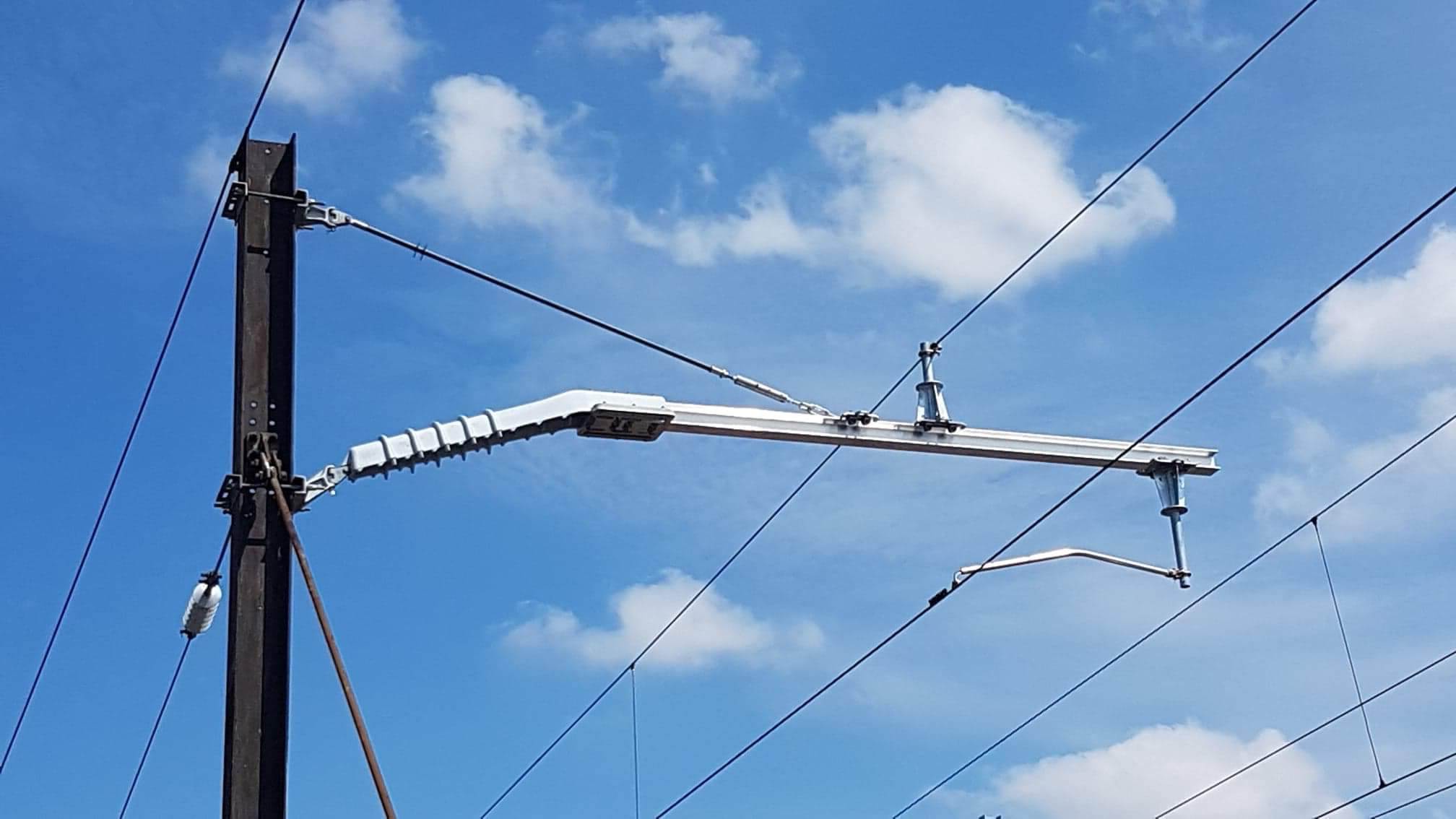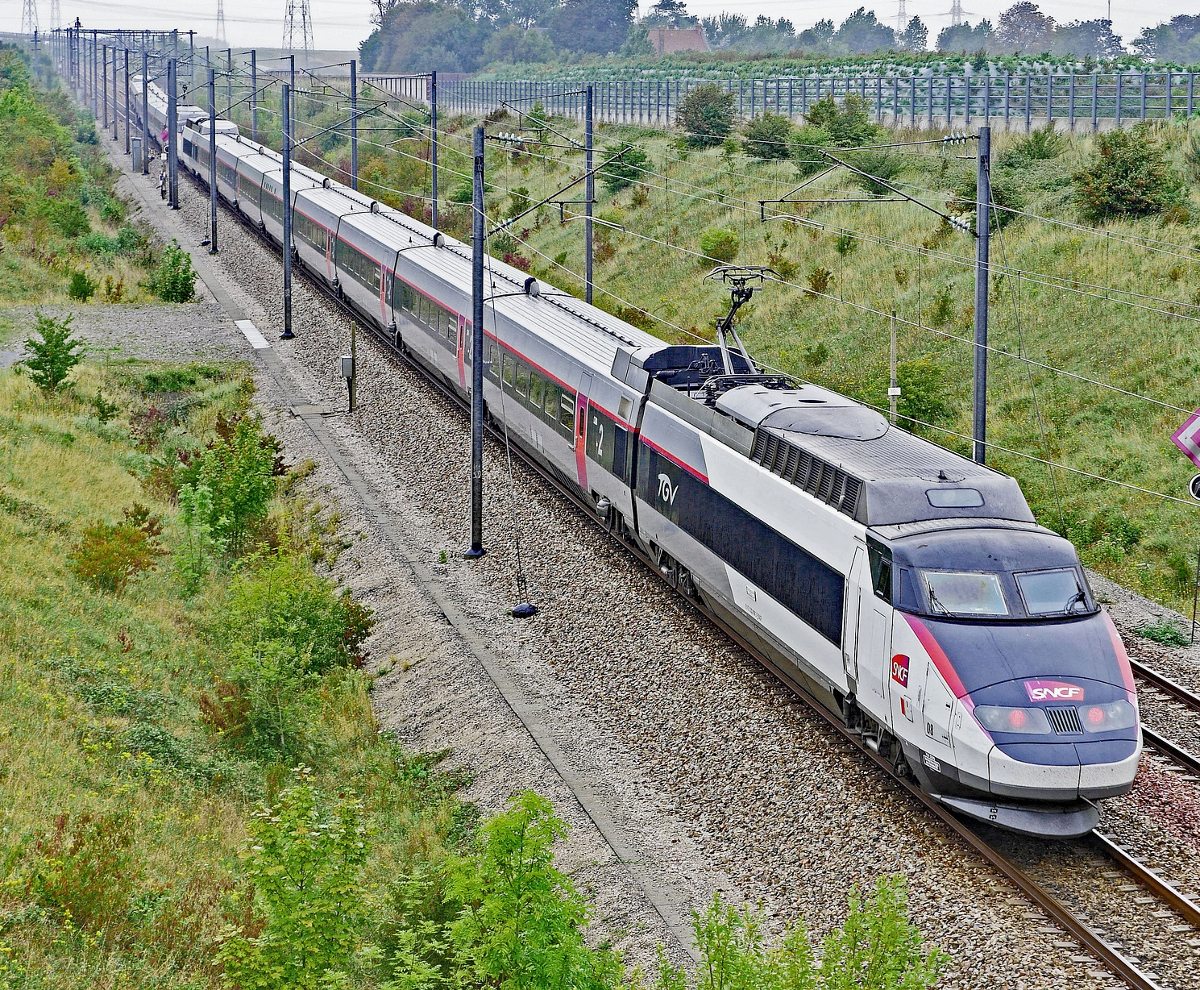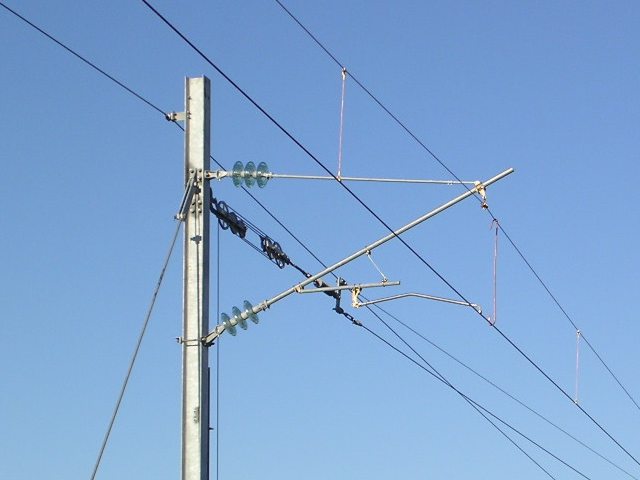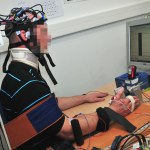A mini revolution in railway catenaries
The decade-long ACCUM project carried out by SNCF, Stratiforme Industries, the Valenciennes Railway Testing Center and IMT Lille Douai has led to the development of a new catenary cantilever system for railways. This advance represents a major change in this field, where equipment has seen little change over the past 50 years.
When asked to draw a train on a railway track, odds are that most people would not think to include the poles along the railway. Yet these vertical support structures, placed every 20 to 60 meters along electrified railway lines, are essential for supporting the overhead lines that power the trains. The portion located at their peak, which is responsible for holding the wires, plays an especially crucial role. It is composed of a cantilever system, which must at once support the contact wire at a constant height with centimeter precision (for high-speed lines), and withstand significant mechanical constraints arising from the voltages applied to the wires, while ensuring the electric insulation between the wire and the pole.
The catenary cantilever system is an extremely sensitive piece of equipment which has remained virtually unchanged for a half a century. Composed of some hundred parts assembled to form a triangular metal tube, current cantilevers are a real puzzle to assemble and adjust. “Since the stresses are triangulated on the structure, when an adjustment is made at one location within the system, everything is shifted, and it all has to be adjusted again,” explains Patrice Hulot. An engineer at Lille Douai, he contributes to the ACCUM[1] project, which aims to simplify catenary cantilevers.

The ACCUM catenary cantilevers are made from composites, and are much easier for operators to assemble.
This modernization project has been carried out over the last ten years by the SNCF and Stratiforme, a company that specializes in composite materials. In 2019, it culminated in the installation of 50 prototypes on test lines at the Railway Testing Centre (CEF), followed by installations on commercial lines. It represents a revolution for SNCF lines, and offers catenary operators the first in-depth modification of this system in fifty years.
A universal catenary cantilever system
What sets apart the new cantilevers developed through the ACCUM project is that they are composed of a limited number of parts to assemble on site. “Everything is delivered 80% pre-assembled,” says David Cnockaert, project manager at Stratiforme. “And these final components to be assembled make it possible to cover all the different types of post configurations and railways.” Furthermore, these new fittings can be used for 1,500 volt and 25,000 volt lines alike. The flexibility of this system allows it to be described as universal, since it can be adapted to all types of electrification, hence its name –ACCUM, the French acronym for “universal multi-voltage composite catenary cantilever.”
The first systems to be installed demonstrated how easy they are to assemble compared to the previous systems, with the major benefit being the time needed for adjustment and fine-tuning, which represents up to 50% of the total time needed to install or replace cantilevers. This therefore makes it possible to reduce the time required to set up the cantilevers, significantly increasing the availability of railways during renovation work while reducing installation costs and the duration of work to put in new lines. These results are even more satisfactory since they are only the initial results. “Operators had decades of experience to optimize the installation of the old systems, so the installation of the new cantilevers will clearly take less time in the months and years to come,” says Patrice Hulot.
This innovation has received praise within the industry. The project was rewarded at JEC World in March — the global composite materials show — by an Innovation Award. It should be noted that while, for the moment, the new catenary cantilever has only been implemented on the French railways, this mini revolution in railway equipment has the potential for international success. The SNCF is a global leader in the high speed rail sector, in terms of both rolling stock and infrastructure. Its competitors therefore closely monitor developments in the field. This means that Japan or North Africa could soon be added to the list of future markets for the universal composite catenary cantilever.
[1] FUI ACCUM project, co-funded by BPI France and the Hauts-de-France region and accredited by the i-TRANS competitiveness cluster. Project leader: Stratiforme. Partners: IMT Lille Douai, ARMINES, Railway Testing Center (CEF) and the SNCF Network.






Leave a Reply
Want to join the discussion?Feel free to contribute!